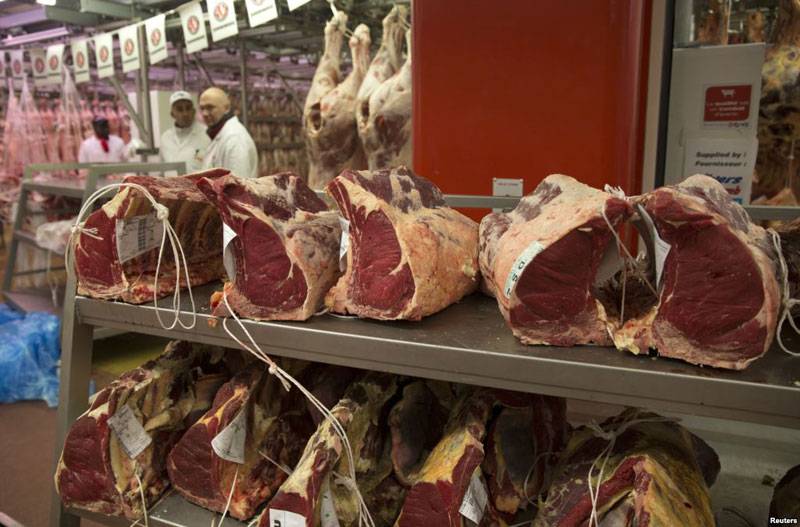Reuters
RUNGIS, France
At the temple to gastronomy outside Paris, Rungis market, Marinette shows off a tray of fat white truffles from Italy, at 1,800 euros a kilo ($1,000 per pound).
“Put your nose in there,” she tells her customers, who brave the early morning hours to supply restaurants and retailers throughout France and beyond during the lead-up to Christmas.
Rungis, the largest fresh food market in the world, is abuzz the week before Christmas as wholesalers sell everything from oysters and salmon to gruyere, green beans and sides of beef.
Located a few kilometres (miles) south of Paris, Rungis is spread over 234 hectares, making is just a bit larger than the sovereign state of Monaco. Some 12,000 employees make this well-oiled machine run to the tune of 9 billion euros in sales each year, up 3.8 percent from 2012 to 2013.
“I’ve worked here for 35 years!” Marinette said. “I love truffles, caviar and also foie gras. I know all the sellers here - the atmosphere is great.”
Rungis, built to replace the old Les Halles market in Paris that closed in 1969, is a massive source of economic growth, supporting an estimated 102,000 jobs throughout the country.
When the doors open each morning at 2am, the first buyers are usually sushi chefs who value selection over price. Later buyers look for a bargain, when prices are cut for quick sale.
Hardest for seafood sellers - who sell about 200 kilos of fish a day - is knowing how much to buy as more restaurants place last-minute orders due to uncertain client demand, which increases the risk of too much stock. “With ten days before Christmas, they’re under a lot of stress,” said David Bourganel, development director at Rungis. Three thousand restaurants buy directly in person from Rungis each morning, while another 30,000 from as far away as Asia and the Middle East receive deliveries.
Saturday, April 20, 2024
Truffles and turkeys await Christmas tables at ‘Belly of Paris’

Pak economy improving, funds will be provided on request: IMF
9:57 PM | April 19, 2024
Minister advocates for IT growth with public-private collaboration
9:57 PM | April 19, 2024
Judges' letter: IHC seeks suggestions from all judges
9:55 PM | April 19, 2024
Formula 1 returns to China for Round 5
9:05 PM | April 19, 2024
Germany head coach Julian Nagelsmann extends contract till 2026 World Cup
9:00 PM | April 19, 2024
A Tense Neighbourhood
April 19, 2024
Dubai Underwater
April 19, 2024
X Debate Continues
April 19, 2024
Hepatitis Challenge
April 18, 2024
IMF Predictions
April 18, 2024
Kite tragedy
April 19, 2024
Discipline dilemma
April 19, 2024
Urgent plea
April 19, 2024
Justice denied
April 18, 2024
AI dilemmas unveiled
April 18, 2024
ePaper - Nawaiwaqt
Advertisement
Nawaiwaqt Group | Copyright © 2024





